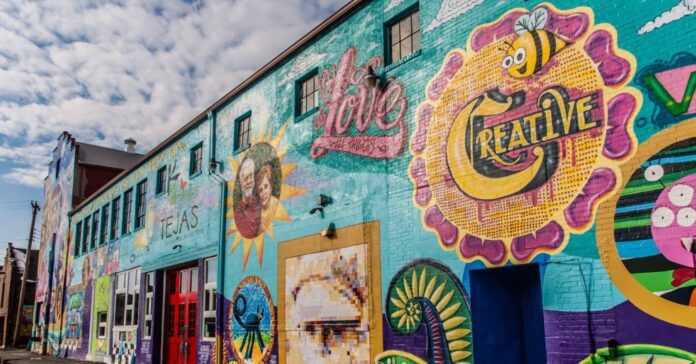Street art is far and away the world’s most globally accessible genre of contemporary art. It’s shared obsessively on social media, courted by fashion and lifestyle brands, and now, a darling of the commercial art market as well. If there was any perception that work by street art’s stars was too lightweight to be taken seriously, the $14.7 million paid for a painting by KAWS earlier this year at least made those doubters sit up and pay attention.
What Is Street Art?
One problem for art institutions is simply definition.
The terms are blurry, but whereas “graffiti art” classically referred to spray painted tags or murals featuring a given artist’s name, “street art” suggested a more image-based genre that expanded to stencils, stickers, wheat-pastes, and various other forms of visual trickery in the urban environment, sometimes interacting directly with its surroundings, such as existing signage or the convenient positioning of a tree.
This makes “street art” somewhat more visually appealing than classic tags. However, the name itself suggests that the work’s value remains rooted in public space (i.e. the street), putting it at odds with the two contexts taken most seriously by the art world: the market and the museum. Some argue that divorcing street work from its original context in order to sell or archive it removes some of its anarchic magic, even as some of its artists have expanded their practices radically beyond alleyways and overpasses—albeit in ways that still don’t necessarily fit into the traditional museum framework.
From Vandalism to Branding
Tina Ziegler, a curator who is the director of street art fair Moniker, says that the movement is having an “identity crisis.” For Ziegler, “urban contemporary” has become a better handle because it can include art made in the studio, such as installations, prints, and paintings on canvas. The defining characteristic shared with street art proper, Ziegler says, is its accessibility, and the motivation to take artwork outside of the stuffy walls of an art gallery and into the public domain. That said, Ziegler admits that “street art” still communicates quickly to a mass public what her fair is about.
This points to the lingering negative associations that may explain why museums are slow to embrace the form. Due to the anti-establishment nature of much street art, the movement is still often associated with crime.
Gentrifying Street Art?
For Martyn Reed, an artist, director of a street art festival, and co-editor of Nuart Journal, an academic journal devoted to street art, museums’ “archaic structural mechanisms” are to blame for their resistance to embracing the movement. He argues that museums are threatened by street art because its practitioners have found an alternative route to success.
Reed has his own thoughts on the art world’s recent attempts to reclassify the genre. He sees the excision of “street” from “street art” and the substitution of “urban” as a gentrifying impulse. Worse still, he says, is the term “urban contemporary,” which he calls “street art’s cleaned-up neoliberal cousin.”
Analysis
After my co-design research activity with residents of Dayton, I learned that one of the signifying representations of Dayton was the street art and large building murals. These exist all over historic parts of Dayton, including the K12 art studio and the railroad tracks. I think this form of art is extremely meaningful, especially when it tells the story or history of the place where it exists. I think the invitation of local artists is also critical for this place based design installation. Personally, I’ve seen many murals be large draws for people wanting to come to the site for picture opportunities which I can see having a positive and negative affect in the co-working setting. It’d be positive because it would give the location some exposure and essentially free advertisement; on the other hand, there would have to be a way for the working professionals to not be distracted by the mural onlookers.




